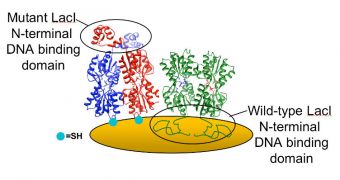One of the most important processes underlying the way life works is the interaction, or binding, of proteins to deoxyribonucleic acid (DNA) inside each living cell. Experts at the Rice University now create a method that allows scientists to view this interaction quicker than ever before.
Conducting measurements as the binding occurs is of great importance for biologists, chemists and physicists alike. By analyzing it, the experts could potentially produce a new understanding of the way life has evolved to operate over the past few billion years.
The key to the success the new method has lies with the novel use of a quartz crystal microbalance (QCM), the Rice team reveals. This method allows observers to dynamically measure the binding activity of wild-type and mutant proteins.
The study was led jointly by assistant professor in chemical and biomolecular engineering Sibani Lisa Biswal and by the Stewart Memorial Professor of Biochemistry and Cell Biology at Rice, Kathleen Matthews. The latter was also the dean of the Wiess School of Natural Sciences, and a study coauthor.
Using the microbalance as a base of operations, the investigators followed closely the processes governing the activity of DNA, as the structure was either introduced in, or extracted from, proteins.
According to Biswal, the team's success was made possible by the innovative way in which they used QCM. This is not a unique device, as several other universities around the world have it.
“It's mainly used for chemical and biomolecular sensing. QCM works by measuring the resonance frequency of a quartz crystal,” Biswal explains of how the device works.
“When you apply current, it resonates, and we translate that through electronic measurements into a frequency. When you add something to the surface of the crystal, the frequency changes. That's what we're looking for,” she adds.
Details of the new investigation, which was supported by a grant from the Robert A. Welch Foundation, appear in the latest issue of the journal Langmuir, which is edited by the American Chemical Society.
“When you apply sufficient mass to the quartz crystal, it's going to change its resonance frequency. The change in mass is proportional to the change in frequency,” Biswal adds, saying that the crystals are sensitive enough to detect the attachment or subtraction of a single DNA moleculs.
This approach allows the experts to analyze changes that occur on the DNA-protein binding process nearly in real-time. “People who develop biosensors need to be able to attach proteins onto surfaces,” the experts say.
“Our work indicates that you can't just immobilize proteins non-specifically onto a surface. You actually do need to make some type of mutation to make sure the binding site is accessible. This platform allows us to easily screen and study what type of mutations are needed,” they conclude.

 14 DAY TRIAL //
14 DAY TRIAL //